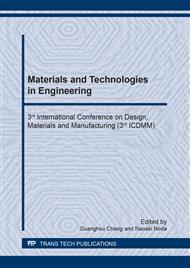p.15
p.23
p.28
p.35
p.40
p.46
p.53
p.59
p.65
Effects of Reaction Temperature and Electrolyte Concentration on Interfacial Reactions between Graphite and Propylene Carbonate-Based Solutions
Abstract:
The effects of temperature and electrolyte concentration on the reaction of graphite electrodes in propylene carbonate (PC)-based solutions were investigated. In the case of natural graphite, it was confirmed that the reaction leading to the insertion of lithium ions into the graphite, which does not proceed at 25°C in a solution with a concentration of 0.85 mol kg–1, proceeds by lowering the reaction temperature to –15°C. The temperature at which lithium ions were inserted increased as the concentration increased. That is, lithium ions were electrochemically inserted into the interior of the natural graphite at 5°C in a solution of 1.63 mol kg–1 and at 15°C in a solution of 2.45 mol kg–1, indicating that the temperature and the electrolyte concentration greatly affect the properties of the solid electrolyte interphase produced by the decomposition of the PC-based electrolyte. Similar and slightly different electrochemical behavior was observed for synthetic graphite in terms of changes in temperature and the electrolyte concentration factor. In synthetic graphite, the temperature at which lithium ions were inserted was lower than in natural graphite: –25°C and 5°C in solutions of 0.85 mol kg–1 and 2.45 mol kg–1, respectively.
Info:
Periodical:
Pages:
40-45
Citation:
Online since:
December 2018
Authors:
Price:
Сopyright:
© 2018 Trans Tech Publications Ltd. All Rights Reserved
Share:
Citation:


